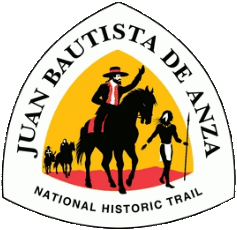Junior Rangers Virtual Expedition
Anza was looking for strong people when he chose you to come on the expedition. It looks like he was right!
As you travel, you will be able to track your progress on your expedition map.
The first thing you will need to do is choose a real member of the expedition whose story you will follow.
Select a member of the Anza Expedition. There are six to choose from:
Isabel Berreyesa, a young woman

My name is Isabel Berreyesa, and I am an 18- year-old. My brother's name is Nicolás Antonio Berreyesa, and he is 15 years old. Both our parents have died and left us alone. It has been very hard for us to make a living, and we have become very poor.
When Commander Anza came to Villa de Sinaloa, we heard that some of our neighbors have enlisted. I have no husband and Nicolás is too young to join the army, but we begged Commander Anza to let us come along. Nicolás can help with the animal herds and I can help with the children. Commander Anza finally consented. Perhaps Nicolás will become a soldier when he is older.
Select MeAntonio Quiterio Aceves, a father

My name is Antonio Quiterio Aceves. I am 35 years old.
My wife's name is Feliciana Cortés, and she is 30 years old. We have five children: three boys, Cipriano 6 years old, Gregorio 4 and Juan Pablo 1, and two girls, Petra 12 and Gertrudis 3.
We also have living with us José Antonio who is 20 years old. We were both from Durango, but times became hard for us there, so we went to Culiacán. There I was a farm worker, but life was no better.
Last spring when Commander Anza set up his recruiting table in the plaza asking for men who would like to join the army and help start a new presidio in Alta California, I listened to him. I went home and told my wife that I would be joining. It will be a hard trip as our youngest children will have to ride with us on our horses, but we hope for a better life.
Select MeJuana María Cárdenas, a mother
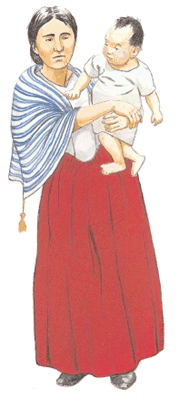
My name is Juana María Cárdenas, and I am 23 years old. My husband's name is Felipe Santiago Tapia and he is 39 years old. I have only been married to him for a short time. His first wife, Filomena Hernández, died, leaving him with eight children to care for.
Since we have been married, we have had a little boy, Victorio who is now 6 months old. The other sons of my husband are: Bartolomé 11 years old, Juan José 9, Christobál 8 and Francisco 7. His daughters are: Rosa 13, Antonia 12, Manuela 6 and Isadora 5.
Last spring when Commander Anza came to Culiacán and set up his recruiting table in the plaza the proclamation said they were particularly interested in large families. With my husband's eight children from his first wife and our new baby, my husband was very welcome.
Select MeFather Pedro Font, a priest

My name is Father Pedro Font. I was born in 1737 in Gerona, in Catalonia, Spain.
After becoming a Franciscan priest, I came to New Spain as a missionary to teach the Indians our Catholic religion and all the advantages of becoming loyal subjects of the Spanish Crown. I trained at the College of the Holy Cross of Querétaro and was assigned to the Mission San José de Pimas in Sonora, New Spain.
This year I have been asked to accompany Commander Juan Bautista de Anza on a trek to Alta California from the Tubac Presidio. I met him in Horcasitas in September. I will be responsible for the spiritual life of the about 300 people who will be on this trek.
I have been asked to go because of my expertise in the use of the English quadrant. This instrument will allow me to record the latitudes as we travel. This information will be very important for mapmakers and for future travelers. I have also been asked to bring along my psalterio (a special kind of harp.) The Indians may enjoy its music.
Select MeFeliciana Arballo, a young widow
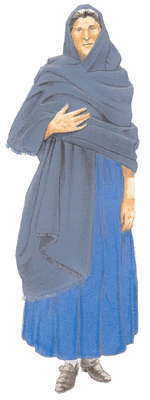
My name is Feliciana Arballo. I am 25 years old and widow of José Gutiérrez with two children, María Tomasa 4 years old and Eustaquia born only a month ago.
My husband died a few months ago, and there was no one in my area that I would like to marry.
Last spring people came by my house and told me they had enlisted to go with Commander Anza to Alta California. I begged him to let me and my daughter to go with him and Anza accepted me the next day. Although I am recently a widow, I am a happy person, and I like to sing and dance.
Select MeJosé Joaquín Moraga, a soldier
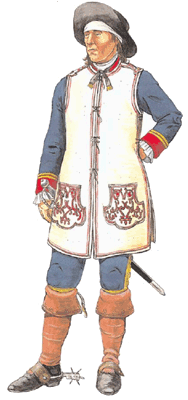
My name is José Joaquín Moraga. I am 30 years old. I was baptized in 1745 at Guevavi, Sonora (in present‐day Arizona).
I was stationed at the Fronteras Presidio when Commander Anza asked me to be the second‐in‐command on his very important expedition to Alta California.
We will be bringing many families to this new land. I will stay with them in Alta California to start a new presidio (fort) at the port of San Francisco. My wife has been very ill, and I do not know if she will be able to take this journey with me.
Select MeYou are preparing for your trip from your home in Villa Sinaloa to travel to your new home in San Francisco – a distance of over 1,700 miles!
Click Villa Sinaloa on the map.You are preparing for your trip from your home in Culiacán to travel to your new home in San Francisco – a distance of over 1,800 miles!
Click Culiacán on the map.You are preparing for your trip from your home in Culiacán to travel to your new home in San Francisco – a distance of over 1,800 miles!
Click Culiacán on the map.You have been directed to meet Commander Juan Bautista de Anza and the rest of his expedition group at Horcasitas. That will be the final staging area before the expedition leaves for Alta California.
Your destination, the Presidio de Monterey, is near the upper left corner. A journey of over 1,500 miles awaits you!
Click the Presidio de Monterey on the map.You are preparing for your trip from your home in Culiacán to travel to your new home in San Francisco – a distance of over 1800 miles!
Click Culiacán on the map.Commander Anza has asked you to help him recruit colonists to make the long journey to Alta California.
You will join the expedition in Horcasitas. Your destination is San Francisco Bay, where you will be in charge of establishing a new presidio.
Click the Presidio of San Francisco on the map.Although you may want to bring many things, because of the limited space, you will only be able to bring things you need.
Which bundle of things should you take on your expedition?
Click on your selection:
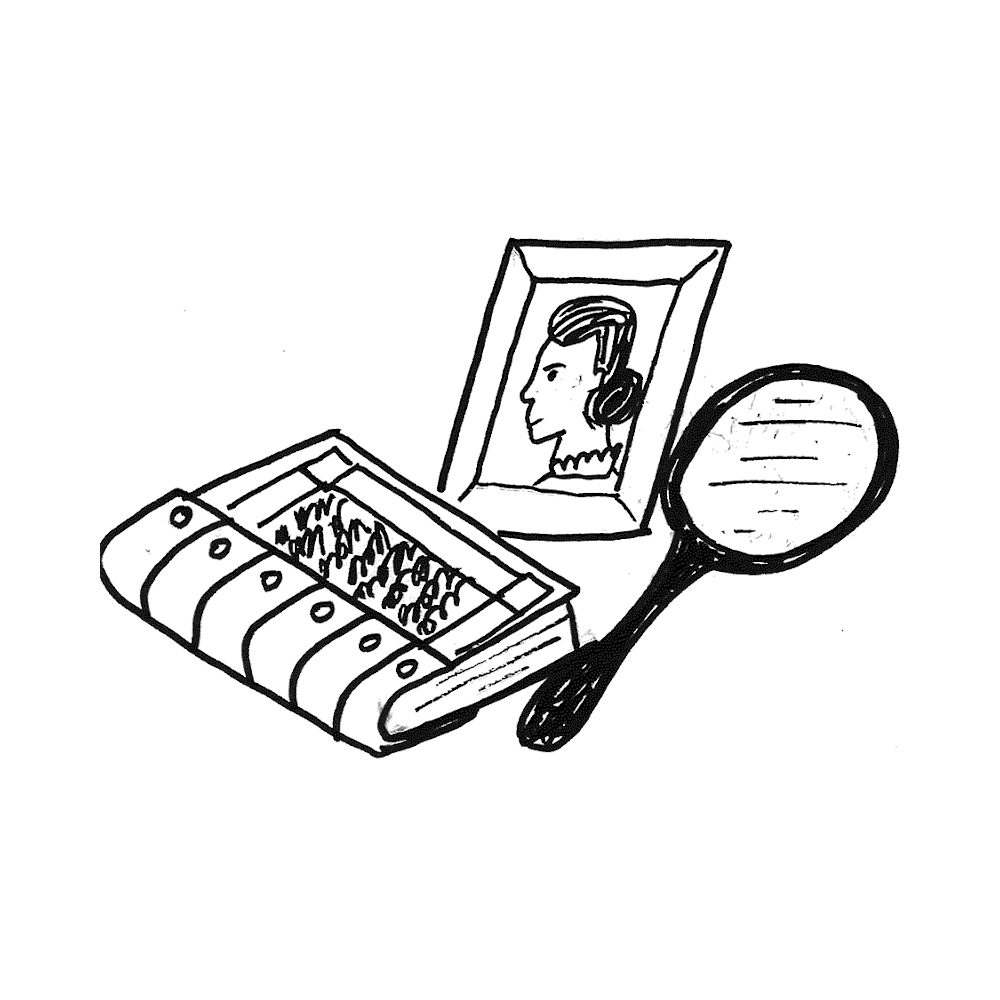
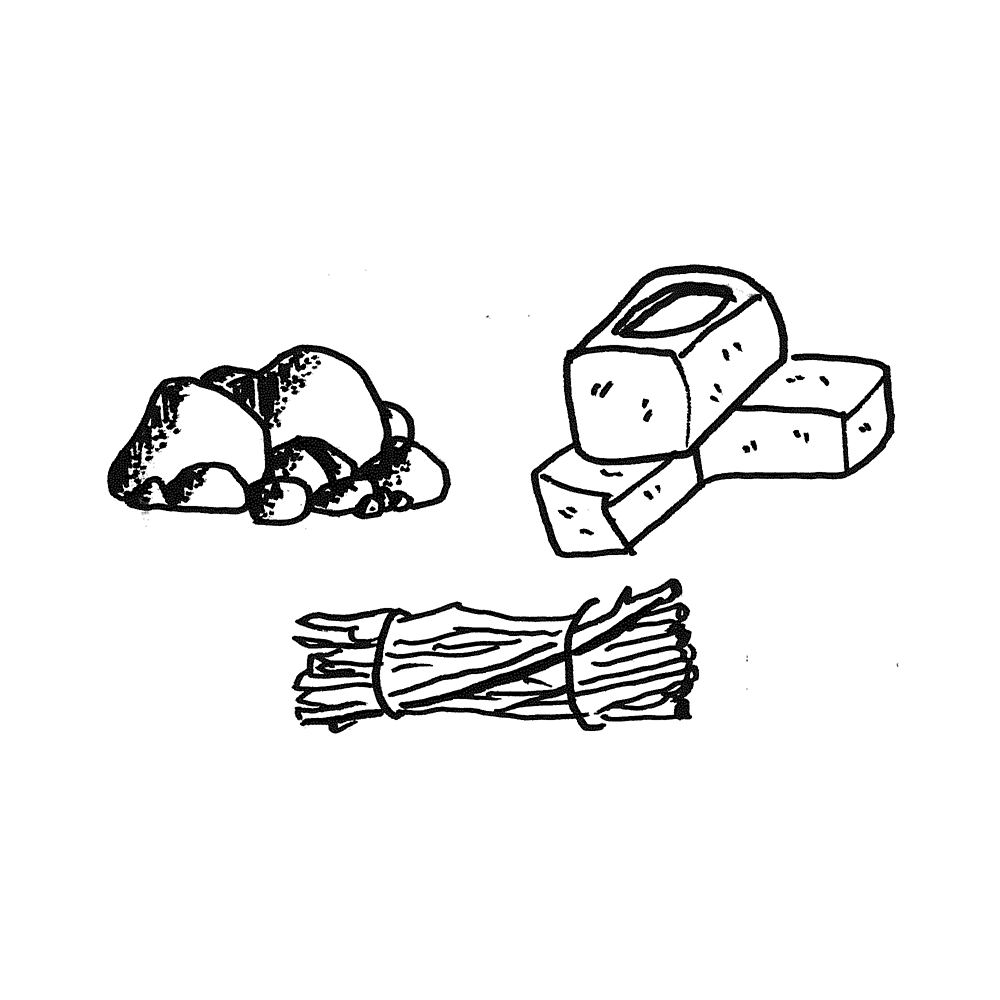
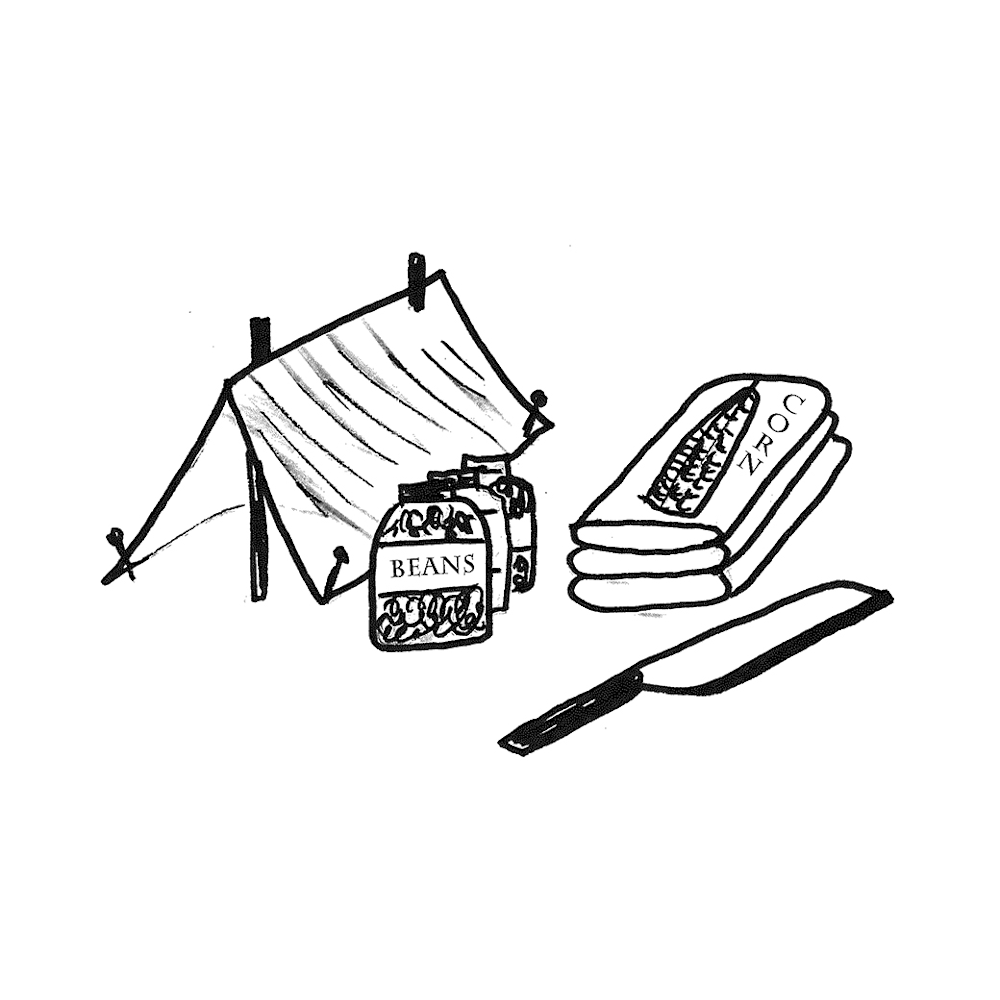
Correct!
Families shared tents to stay warm at night. They depended on corn and beans as well as hunting for food. A sharp knife was needed to cut up food and help with repairs.
Since most people on the expedition could not read, books were unnecessary. Things like pictures and mirrors are nice to have, but there would be little space for them.
Although the families would have to build houses at their new homes in San Francisco, they would use the clay they found in San Francisco to make adobe bricks. It would be too heavy to carry building supplies all the way to San Francisco.
You have reached Horcasitas. Congratulations!
Commander Anza will lead you from here.
Click Horcasitas on the map to continue. Hint: Hold your mouse over an icon to find the name of a campsite.The presidio at Horcasitas is where many of the families on this journey will meet for the first time.
You wait here until the heat of the summer passes. Commander Anza will lead you north on September 29, 1775.
This will be a large and diverse expedition!
To continue, select the image you would you NOT see as part of the Anza Expedition (hover over images for a description).
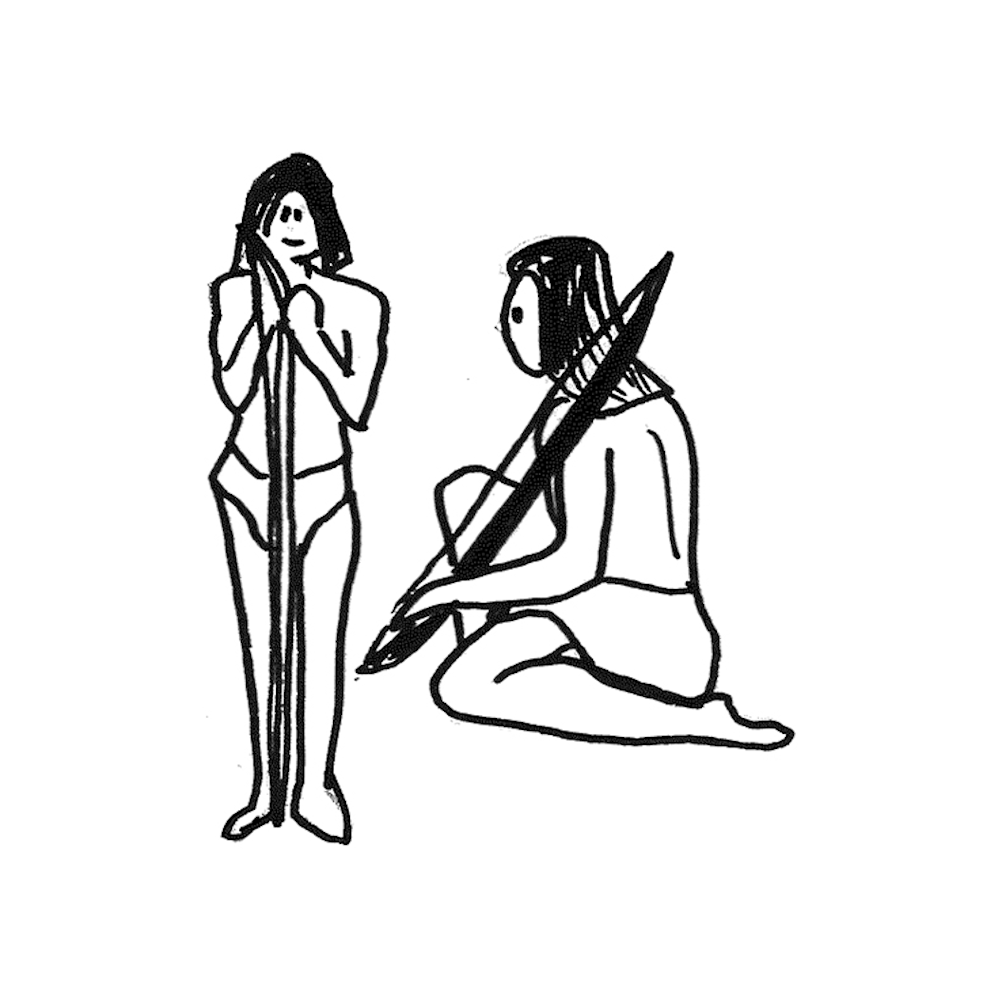
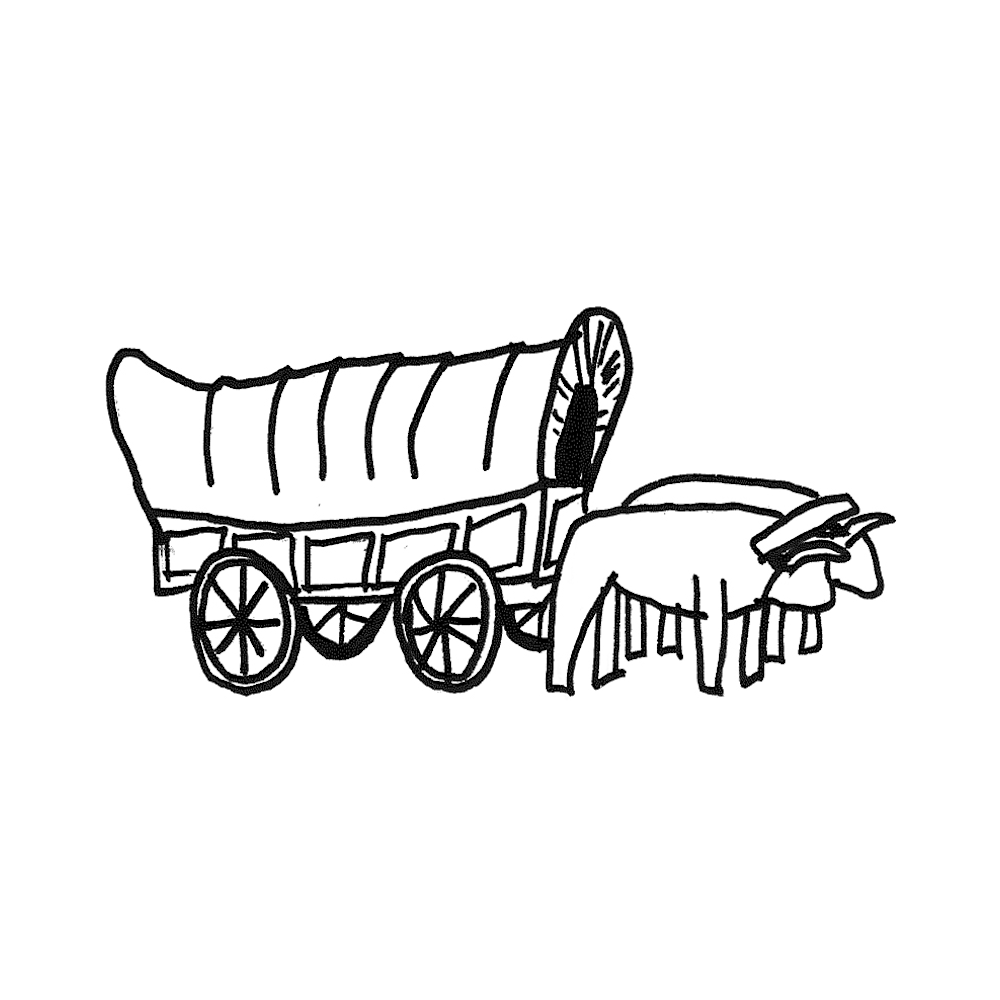

Once you depart Horcasitas, you begin traveling 160 miles north to the Tubac Presidio. Fresh water will be very important to your survival on this journey.
Before reaching Tubac, the expedition will camp at a natural wetland, a site now known as Las Lagunas de Anza.
Click on the photo of Las Lagunas de Anza (in present-day Nogales, AZ) to continue:
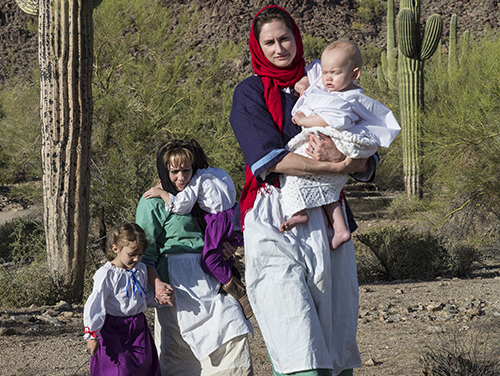
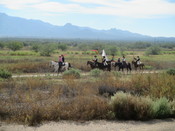

Good job. After leaving the wetlands, you have reached the Presidio de Tubac.
Tubac marked the very last Spanish fort that offered you and the rest of the expedition protection before entering the desert.
Good job. After leaving the wetlands, you have reached the Presidio de Tubac.
Tubac marked the very last Spanish fort that offered you and the rest of the expedition protection before entering the desert.
Good job. After leaving the wetlands, you have reached the Presidio de Tubac.
Tubac marked the very last Spanish fort that offered you and the rest of the expedition protection before entering the desert.
Good job. After leaving the wetlands, you have reached the Presidio de Tubac.
Tubac marked the very last Spanish fort that offered you and the rest of the expedition protection before entering the desert.
Good job. After leaving the wetlands, you have reached the Presidio de Tubac.
Tubac marked the very last Spanish fort that offered you and the rest of the expedition protection before entering the desert.
Good job. After leaving the wetlands, you have reached the Presidio de Tubac.
Your return home to your family in Tubac should have been a time for celebration. But, while you have been away, your wife has become ill. She will not be able to make the long journey with you.
You and your wife decide that she and your son will join you in San Francisco. They will take the next expedition, as soon as she is well enough to travel.
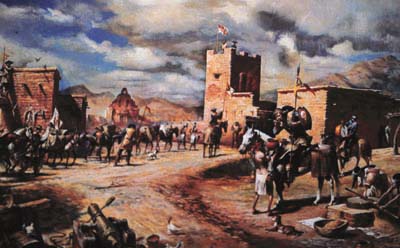
The first night away from the Presidio de Tubac, one of the members of the expedition, María Ygnacia Manuela Piñuelas, died while giving birth to her son. She will be buried at Mission San Xavier del Bac, a small mission in the Tohono O'Odham community. Father Font leads the group in singing a funeral song. Listen to the music before heading to Mission San Xavier.
Listen to the music before you continue:
The expedition has arrived at Mission San Xavier. You left Tubac three days ago. Horcasitas is now about 200 miles behind you.
Click Mission San Xavier on the map to continue. Hint: Hold your mouse over an icon to find the name of a campsite.
At Mission San Xavier, you performed an important ceremony for several couples on the expedition. What do you think this ceremony was? (Hover over image for answer)
At Mission San Xavier, Father Font performed an important ceremony for several couples on the expedition. What do you think this ceremony was? (Hover over image for answer)
At Mission San Xavier, Father Font performed an important ceremony for several couples on the expedition. What do you think this ceremony was? (Hover over image for answer)
At Mission San Xavier, Father Font performed an important ceremony for several couples on the expedition. What do you think this ceremony was? (Hover over image for answer)
At Mission San Xavier, Father Font performed an important ceremony for several couples on the expedition. What do you think this ceremony was? (Hover over image for answer)
At Mission San Xavier, Father Font performed an important ceremony for several couples on the expedition. What do you think this ceremony was? (Hover over image for answer)
Click on your selection:
- A funeral
- A baptism
- A wedding
You and the other expedition members leave Mission San Xavier del Bac on October 26, 1775.
Faith is very important to the Spanish colonists. Many days begin with the singing of a religious hymn called the Alabado.
Play the "Alabado":
The expedition is near the ruins of Casa Grande.
Your group has traveled about 120 miles since Tubac.
The date is Oct. 31, 1775. The group left the Horcasitas staging area 32 days ago.
Click Casa Grande on the map to continue. Hint: Hold your mouse over an icon to find the name of a campsite.As you and the expedition group cross the Sonoran Desert, you meet many new people who speak languages that you do not understand. Along the Gila River, you meet some people from the Akimel O’odham.
Through a translator, you hear from some of these Indians that ancient ruins are located only a few miles away. They call the people who used to live there "Hohokam", which means "those who are gone" and that they disappeared a very long time ago.
All that remains are their large, multi-storied, adobe structures. Some of the Spanish soldiers who have heard of these ruins call them Casa Grande, which means large house.
If you wanted to go to these ancient ruins, which picture do you think fits the description given by the people of the Gila River?
Click on your selection:



Correct! This structure was built by an ancient Sonoran Desert civilization. By the time the Anza Expedition passed, this area had become the homeland of the Akimel O’odham tribe. Many theories exist, but the building’s original purpose is unknown. What do you think the Casa Grande might have been used for?

After leaving the area of Casa Grande, the expedition travels west for nearly a month to the homeland of the Quechan people. The Quechan live near the place where the Gila River meets the Colorado River (in present-day Yuma, AZ).
Click there to continue. Hint: Hold your mouse over an icon to find the name of a campsite.
At the Colorado River, you are greeted by a leader of the Quechan people, Chief Palma, who Commander Anza met last year. Palma and his people are very happy to see Anza and they offer you and the others fresh fruit, vegetables, and fish.
To get to Alta California, you will need to cross the river, which is running very fast. Since you do not know how to swim, you are very frightened.
How do you think Anza is going to get you and the other expedition members across the Colorado River?
Click on your selection:
- He will ask Chief Palma to help. Palma sends his people into the river to help you as you ride your horse across the raging river.
- Anza will have you build rafts from the willows near the river. You will use the rafts to float across the river.
- Anza will instruct everyone to wait six more months until the middle of summer when the water is very low. Then, you will be able to walk across the river.

Building boats would have taken too long and Anza wanted to leave before summer arrived and the temperatures got too hot. He knew that many expedition members and livestock could easily die if they waited until summer to cross the river.
Anza felt that Chief Palma knew the river better than anyone and would give good advice. Palma sent strong swimmers into the river downstream from the crossing to catch anyone who fell. The Quechan swimmers saved at least one boy who fell off his horse and was forced downstream.
After crossing the river you enter a vast desert. This will be the most dangerous part of the entire trip. Your horse has been very weak and you're not sure if it will survive the desert crossing, so you decide to walk instead of ride.
You do not know if there will be enough water available for everyone after you leave the Colorado River. How do you think Anza will lead you and the others across the desert?
Click on your selection:
- He divides the expedition into three groups that will leave one day apart from each other. He will send scouts ahead to find water and dig wells before you and the others arrive.
- He will tell you to drink as much water as you can and then run very fast across the desert before you have time to get thirsty again.
- He will tell everyone to turn and go home to your farms. The route is filled with too many dangers and he does not think that you will be able to make it.
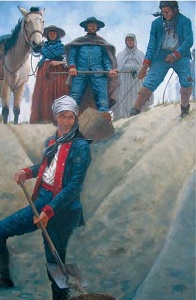
Correct! The distance across the desert was simply too far to travel without water. Anza knew from his talks with Chief Palma that water would only be available in small amounts at a few springs along the way. They would also need to dig shallow wells in order to capture the spring water.
By dividing the expedition into smaller groups and keeping them a day apart, he gave the wells plenty of time to refill after the spring water had been used up by the previous group.
Congratulations. You made it across the desert after nine difficult days. It is now the night of December 17th. The trip across the desert was extremely hard on everyone. Many of the animals died, people became sick, and the weather was always cold and windy.
Anza knew how unhappy and frightened the people were, so he decided to have a fandango — a party with drinks, dance, and music.
As the families gathered around the bonfire, Feliciana Arballo began singing and dancing to the great delight of almost everyone.
As the families gathered around the bonfire, Feliciana Arballo began singing and dancing to the great delight of almost everyone.
As the families gathered around the bonfire, Feliciana Arballo began singing and dancing to the great delight of almost everyone.
As the families gathered around the bonfire, Feliciana Arballo began singing and dancing to the great delight of almost everyone.
As the families gathered around the bonfire, you began singing and dancing to the great delight of almost everyone.
As the families gathered around the bonfire, Feliciana Arballo began singing and dancing to the great delight of almost everyone.
Play a fandango tune:
However, you were horrified to see Feliciana dancing and acting in a way that you thought to be improper. When one of the men in the group attempted to punish Feliciana for singing and dancing, you did nothing to stop him. Anza arrived at the scene. What do you think Anza did?
However, Father Font was horrified to see you dancing and acting in a way that he thought to be improper. When one of the men in the group attempted to punish you for singing and dancing, Father Font did nothing to stop him. Anza arrived at the scene. What do you think Anza did?
However, Father Font was horrified to see Feliciana dancing and acting in a way that he thought to be improper. When one of the men in the group attempted to punish Feliciana for singing and dancing, Father Font did nothing to stop him. Anza arrived at the scene. What do you think Anza did?
Click on your selection:
- Anza allowed the man to punish Feliciana for having too much fun before the expedition had reached its final destination.
- He told everyone to stop enjoying themselves and start praying.
- Anza told the man to stop punishing Feliciana and allowed the party to go on.
Correct! Anza allowed the party to continue. Anza knew that if the group was unhappy, some members might leave and try to return to Mexico. He had to do something to keep everyone's spirits up.
You have now traveled more than 700 miles. It has been 77 days since the expedition left the staging area at Horcasitas.
The hardest part of the journey is behind you now. Green hills have replaced the desert landscape. Onward to the Pacific Ocean!
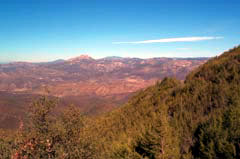
You have reached Mission San Gabriel. The Spanish built this religious outpost in the Tongva homeland to convert the Native people to the Spanish faith and customs. Mission San Gabriel is one of only five Spanish settlements in all of Alta California at the time of your expedition.
It has been 35 difficult days since you left the Quechan people at the Colorado River. Imagine your joy as you approach this Spanish settlement.
 Click Mission San Gabriel on the map to continue.
Hint: Hold your mouse over an icon to find the name of a campsite.
Click Mission San Gabriel on the map to continue.
Hint: Hold your mouse over an icon to find the name of a campsite.

At the San Gabriel Mission, a large group of Indians has built homes, a church, and a storehouse for all of the food that they have grown by farming the land. After crossing the desert and coming up through the mountains, you are thrilled to see so many friendly faces, houses, and food.
The Catholic priests at the mission have been in San Gabriel for three years and have brought many of the local American Indians to the mission to live there.
The few soldiers who are at the mission celebrate your arrival by firing a volley from their guns.
Listen to the sounds of the guns being shot:
Many Native Americans do not want the Spanish to occupy their lands and change their way of life. While you are at Mission San Gabriel, a group of Kumeyaay Indians lead a revolt at Mission San Diego, a week's journey to the south.
Commander Anza leaves San Gabriel to aid the Spanish soldiers stationed in San Diego.
The expedition families wait five weeks until Anza returns. San Gabriel is nearly out of food and is ready for its many guests to move on.
On February 21, 1776, Anza and his expedition depart San Gabriel to continue the journey.
While staying at the mission, you met and fell in love with one of the soldiers — Francisco López — who is stationed there.
You have also made many friends among the expedition group and you don't want to leave them. But, it is doubtful that you will meet another man once you reach San Francisco, because all of the other men on the expedition are married.
This left you with a difficult decision. What should you do?
Click on your selection:
- Stay at the mission and marry Francisco.
- Leave with the expedition and take your chances in San Francisco.
That is exactly what happened!
You stayed at the mission where, in April, you married Francisco.
Eventually, you would see many of your expedition friends again as they began traveling up and down El Camino Real. Some of those friends would eventually return to Mexico, but most would settle in San Francisco, San Jose, or the new pueblo soon to be established in Los Angeles.
The expedition has reached the Chumash Indian village of La Carpinteria. The date is Feb. 24, 1776.
The staging area at Horcasitas is about 1,000 miles behind you. The expedition left there 176 days ago.
Click La Carpinteria on the map to continue. Hint: Hold your mouse over an icon to find the name of a campsite.As the expedition drops down from the mountains, you see the Pacific Ocean for the first time. You are amazed because you have never seen so much water before.
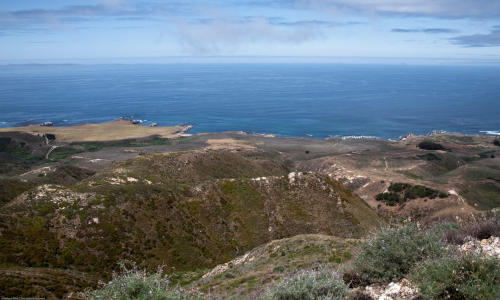
As you get closer, you see people in small boats paddling to the large islands that are about 20 miles offshore. These Indians – the Chumash – seem to be fishing.

You meet more of the Chumash people on the beach. They have many different tools, all of which they have made themselves.
You notice that one of the soldiers has accidentally dropped something from his pack into the sand. When you get closer, you see the soldier’s item lying among a pile of Chumash tools. Guess which of these items might have belonged to the Spanish soldier.
Click on your selection:
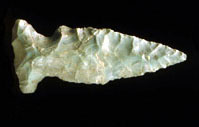


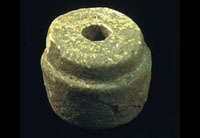
The soldier has dropped his cartridge box (used to carry ammunition). You can tell it is not a Chumash tool because of the metal on the box. The Chumash made most of their tools out of natural materials, like stone, wood, or animal bone. Metal was not yet in use in Chumash culture.

Projectile Point

Digging stick weight

Pestle
You continue north, seeing the remote Spanish settlements of Mission San Luis Obispo and Mission San Antonio.
On March 10, 1776 – nearly six months since beginning your journey – you reach Spain’s northernmost settlement in Alta California – el Presidio de Monterey. Congratulations!
Click Monterey on the map to continue. Hint: Hold your mouse over an icon to find the name of a campsite.Your arrival at Monterey marks the final stage of your journey. The small presidio here will serve as your temporary home for the next few months while Commander Anza explores San Francisco and finds a site for your new, permanent home.
While he is gone, you have time to think about your future.
Click on your selection:
- Return home. California is much too cold and windy along the coast and you miss your family back home.
- Strike out on your own with your family and leave the other settlers.
- Wait for Anza's return and join the other settlers in settling San Francisco.
Leaving most of the settlers back in Monterey, you continue on with Anza and a small party to San Francisco Bay. At last, you come to the end of your long journey — at the edge of the Golden Gate.
That night, Font would write in his diary: "Indeed, although in my travels I saw very good sites and beautiful country, I saw none which pleased me so much as this. And I think that if it could be well settled like Europe there would not be anything more beautiful in all the world."
That night, you write in your diary: "Indeed, although in my travels I saw very good sites and beautiful country, I saw none which pleased me so much as this. And I think that if it could be well settled like Europe there would not be anything more beautiful in all the world."
Within a few months, the colonists will begin building a new civilization on this far edge of the Spanish Empire. In a few short years, cattle will dot the landscape, ships will sail with regularity into the harbor, and this little presidio will be on its way to becoming the city of San Francisco that we know today.
This area is the homeland of the Ohlone people. In addition to their new military fort (presidio), the Spanish wish to establish something else here in San Francisco Bay.
What else do the Spanish establish when they arrive to San Francisco in 1776?
Click on your selection:
- The Golden Gate Bridge
- A museum to preserve and honor the Ohlone way of life
- A religious mission to convert the Ohlone to the Spanish way of life
Correct. The Spanish imposed their religion and way of life on the Native American population as they colonized new areas. The Spanish wished to create new believers in their faith and new subjects for their king. The Spanish thought the missions would save the Native people, but instead the missions represented the end of a way of life for many Native American communities.
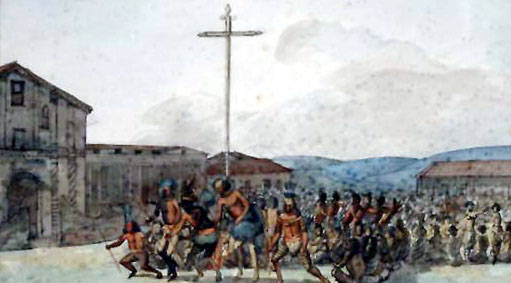
You, Anza and the others continued to explore the San Francisco Bay area for another two weeks before rejoining the settler families in Monterey. After a few joyful days, you, Anza, and a group of soldiers left Monterey, to return to Mexico to see the Viceroy. All of the families of settlers were left in the charge of Lieutenant Moraga.
Congratulations!
You have successfully completed your journey.

You have followed the historic route taken by Isabel Berreyesa during the Anza Expedition of 1775-1776.

You have followed the historic route taken by Antonio Quiterio Aceves during the Anza Expedition of 1775-1776.

You have followed the historic route taken by Juana María Cárdenas during the Anza Expedition of 1775-1776.
Congratulations!
You have successfully completed your journey.

You have followed the historic route taken by Father Pedro Font during the Anza Expedition of 1775-1776.

You have followed the historic route taken by José Joaquín Moraga during the Anza Expedition of 1775-1776.
Congratulations!
You have successfully completed your journey.

You have followed the historic route taken by Feliciana Arballo during the Anza Expedition of 1775-1776.

After arriving to San Francisco, Isabel married another member of the Anza Expedition, Juan Peralta in 1777. They moved from San Francisco south to Monterey. They had no children.
Isabel had come to San Francisco with her brother, Nicolás. Nicolás may have been homesick in San Francisco, for he asked for permission to return south to his hometown. Evidently, either permission was denied or he changed his mind because in 1779 he married María Gertrudis Peralta, Juan Peralta's sister.
Nicolás joined the group of soldiers who were in charge of protecting the San Francisco Presidio and remained there with María. They raised their five children.

Antonio and his wife moved up to San Francisco with Lieutenant Moraga and the other families on June 27, 1776.
Within a few years, Antonio's family moved down to the newly created pueblo of San Jose — 50 miles south of San Francisco. There, Antonio had a son, Jose Maria. He and his brother began working in San Jose as farmers. Eventually, Antonio's sons joined the military and settled in San Francisco.

Antonio's daughter, Petra, married Antonio Romero and stayed close to her family in San Jose with her new baby boy.
Antonio's other daughter, Gertrudis, married an Apache Indian farmer, Manuel Gonzáles, and settled in San Jose.

Many members of the Anza Expedition undertook the risky journey to give their children opportunities for a better life. For Juana María Cárdenas, the risk paid off.

Juana and her family moved south in 1790 to the newly created pueblo of Los Angeles. She raised a total of 14 children, many of whom found prosperity in California.
Her son, Jose Bartolome, would become a prominent figure in San Luis Obispo. Perhaps the greatest symbol of wealth in Spanish and Mexican California was the rancho – a vast land grant for raising cattle. Jose Bartolome received a large land grant near Los Angeles -- Rancho Topango Malibu. Juana’s grandson, Tiburcio, also received a major land grant at Cucamonga.

Father Font returned with Anza to Horcasitas. He spent the rest of his life working at the various missions in Sonora, in what is today northwestern Mexico.
From Horcasitas, he went to Ures and completed his short diary. Then, he was assigned briefly to Ímuris where he suffered through the Indian uprising of November 1776.

Feliciana Arballo, the woman whom Father Font described in his diary as "a very bold widow," left the expedition in San Gabriel.
There, she married Francisco López in April 1776. Sgt. Pablo Grijalva and Sebastian Tarabal testified to her eligibility to marry.

Later, Feliciana and her soldier husband move to San Diego. They have five children. The older of their two daughters, Tomasa, married Juan José Sepúlveda in 1786. They have a son and settle in San Diego.
Tomasa's younger sister, Eustaquia, was married in 1789 to José María Pico, the son of Santiago Pico and Jacinta Bastida. They also take up residence in San Diego.

Isabel's legacy was as a “Californio,” as the citizens of Spanish and, later, Mexican California are known.
When Juan Peralta died in 1832, Isabel was widowed with no children. She moved to San Jose, where she died in 1842.
Many people who arrived to San Francisco on the Anza Expedition later returned to the land they had left behind. But Isabel spent her whole adult life in her adopted home. She saw the transition of California from a rich landscape full of vibrant Native American villages to a colonial society of ranches, cities, and ports.

Many people who arrived to San Francisco on the Anza Expedition later returned to the land they had left behind. But Isabel spent her whole adult life in her adopted home. She saw the transition of California from a rich landscape full of vibrant Native American villages to a colonial society of ranches, cities, and ports.

Like so many of the expedition settlers, Antonio Quiterio Aceves left a great legacy in having children that married and stayed in California. Some went on to become soldiers, others farmers. All of them became part of the rich culture that helped create California.

Feliciana Arballo's legacy to California is in tremendous contrast to her humble arrival.
As a widow, she had begged Anza to allow her to accompany the expedition. After leaving the expedition at the San Gabriel Mission and marrying Juan Francisco Lopéz, she raised her ten children.
Little Maria Eustaquia, who was only an infant when she arrived in California with their mother, Feliciana, went on to marry Joseph Maria Pico.
Their son, Pío Pico, would grow to become one of California's most prominent citizens, becoming the first governor of Afro-Hispanic descent and the last governor of Alta California before its land became part of the United States in 1850.

Many members of the Anza Expedition undertook the risky journey to give their children opportunities for a better life. For José Joaquín Moraga, that risk paid off.
Perhaps the greatest symbol of wealth in Spanish and Mexican California was the rancho – a vast land grant for raising cattle.

In 1835, the Mexican government granted a large rancho to Moraga’s grandson, José Ignacio Moraga. Today, the modern town of Moraga, CA, sits in the area of that rancho as a reminder of the Anza Expedition’s legacy.

Father Font was the spiritual leader for the men, women, and children on the Anza expedition during the most exciting and challenging experience in most of their lives. During that time, he set a moral tone that had a lasting effect on many of their lives. Font led all of the people in daily masses, prayers, and kept the Catholic religion central in their lives. An even more lasting effect could have been on the thousands of American Indians that Font contacted. At one Gila River village alone, Font estimated that he met over 2,000 Gila Indians.
As was typical for priests of his age, he spent considerable time gathering indigenous people together, having them listen to prayers and learn to recite them. Although few of these people had any idea of what he was trying to say, he did pave the way for future priests and missionaries.

When the missions were constructed at other locations along the Anza Trail, Pedro Font had planted the seeds of Catholicism. Some of these local American Indians would remember Father Font and what he had attempted to do with their communities.
One of Font's greatest legacies was the contribution that he has made to history through his diaries and written recollections of the Anza Expedition of 1775-1776.
Become a Junior Ranger
You are now eligible to become an Anza Junior Ranger and to receive your Anza Junior Ranger badge and the other privileges of membership.
Use the Start Over link at the bottom of the page to repeat the expedition as a different character. Many of the characters have different experiences.

